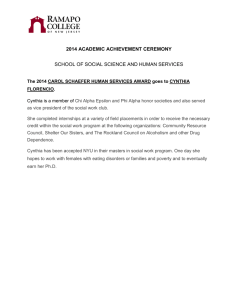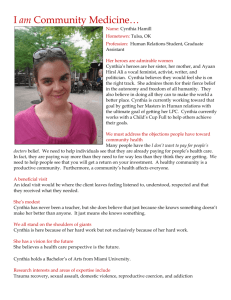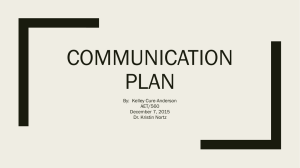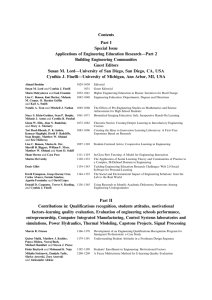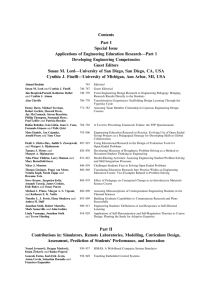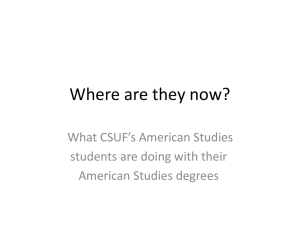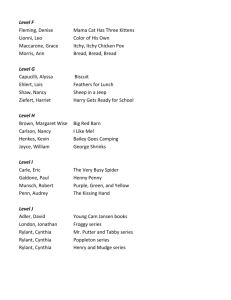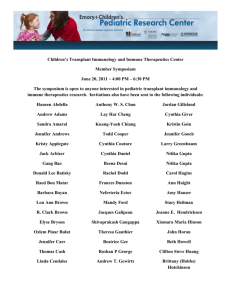Principal Scenario: Activity for Slide 76
advertisement
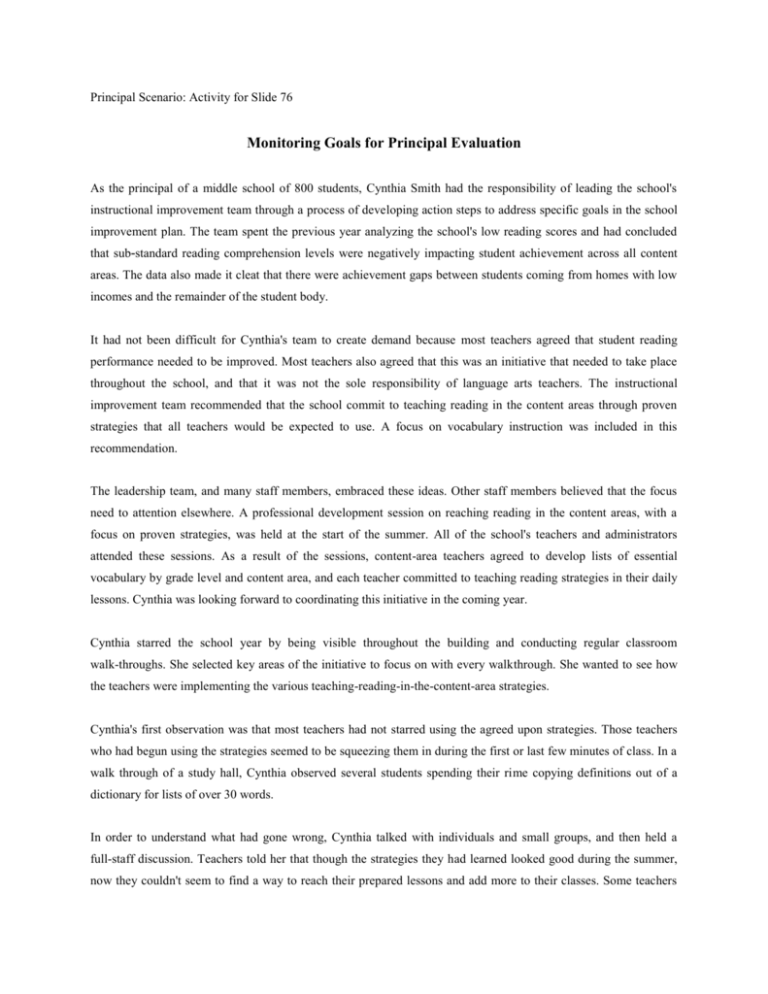
Principal Scenario: Activity for Slide 76 Monitoring Goals for Principal Evaluation As the principal of a middle school of 800 students, Cynthia Smith had the responsibility of leading the school's instructional improvement team through a process of developing action steps to address specific goals in the school improvement plan. The team spent the previous year analyzing the school's low reading scores and had concluded that sub-standard reading comprehension levels were negatively impacting student achievement across all content areas. The data also made it cleat that there were achievement gaps between students coming from homes with low incomes and the remainder of the student body. It had not been difficult for Cynthia's team to create demand because most teachers agreed that student reading performance needed to be improved. Most teachers also agreed that this was an initiative that needed to take place throughout the school, and that it was not the sole responsibility of language arts teachers. The instructional improvement team recommended that the school commit to teaching reading in the content areas through proven strategies that all teachers would be expected to use. A focus on vocabulary instruction was included in this recommendation. The leadership team, and many staff members, embraced these ideas. Other staff members believed that the focus need to attention elsewhere. A professional development session on reaching reading in the content areas, with a focus on proven strategies, was held at the start of the summer. All of the school's teachers and administrators attended these sessions. As a result of the sessions, content-area teachers agreed to develop lists of essential vocabulary by grade level and content area, and each teacher committed to teaching reading strategies in their daily lessons. Cynthia was looking forward to coordinating this initiative in the coming year. Cynthia starred the school year by being visible throughout the building and conducting regular classroom walk-throughs. She selected key areas of the initiative to focus on with every walkthrough. She wanted to see how the teachers were implementing the various teaching-reading-in-the-content-area strategies. Cynthia's first observation was that most teachers had not starred using the agreed upon strategies. Those teachers who had begun using the strategies seemed to be squeezing them in during the first or last few minutes of class. In a walk through of a study hall, Cynthia observed several students spending their rime copying definitions out of a dictionary for lists of over 30 words. In order to understand what had gone wrong, Cynthia talked with individuals and small groups, and then held a full-staff discussion. Teachers told her that though the strategies they had learned looked good during the summer, now they couldn't seem to find a way to reach their prepared lessons and add more to their classes. Some teachers responded that if they taught reading-in-the-content-area strategies they would have to give up having students answer the questions at the end of each chapter and/or quit having students copy words out of the dictionary. Teachers also lamented that they were willing to build content area sequential vocabulary lists, but that they had nor been given the time to do so. A few' brave teachers reported that they felt they were not very good at using the new instructional strategies, so they gave up after a few attempts. To get back on track, Cynthia reconvened the instructional improvement team and they outlined a set of action steps that were “doable”: Each instructional-improvement team member elected a strategy to master and agreed to share sample lessons at the in-service day in the spring. Each ream member committed to using one new strategy every day and to invite any teacher who could come to observe the strategies in action in their classrooms. The team decided to take turns facilitating a volunteer after school study group, focusing on one strategy per week. Cynthia made the most of these team commitments by encouraging the larger staff to take some small, initial steps of their own. She also continued to remind everyone she talked to that their students needed these instructional changes in order to make learning gains in every subject area. Cynthia was determined to affirm all teachers who were using the strategies. She made it cleat to the staff that she didn't expect perfection this year, but wanted to engage teachers in conversations about which strategies might be working better than others. She said that she would attempt to do whatever they needed her to do in order to support everyone utilizing the strategies. And she asked staff to give her ongoing input about how she could best support their efforts. Overall, she began to see the need of flexibility in order to manage her staff through this significant change in instructional focus and practice.
